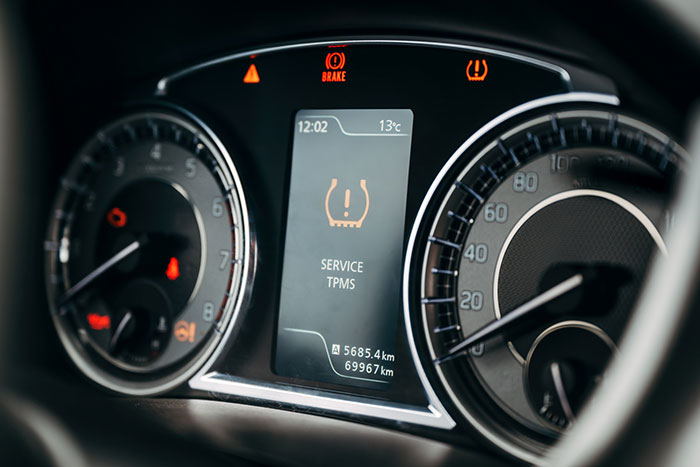
In the modern automotive world, Tyre Pressure Monitoring Systems (TPMS) have become a standard feature in most vehicles, enhancing safety and performance by alerting drivers to any changes in inflation. While TPMS sensors offer valuable benefits, they are not immune to issues that can arise over time. Here we will take a look at some common problems encountered with TPMS sensors and provide insights into troubleshooting and resolving these issues effectively.
Understanding TPMS Sensors
TPMS sensors are electronic devices installed in each tyre that monitor air pressure levels and transmit data to the vehicle’s onboard computer or dash-mounted screen (depending on which type of TPMS you have installed). When tyre pressure drops below a certain threshold, the TPMS system triggers a warning, indicating the need for inflation or inspection.
Common TPMS Issues
Sensor Battery Failure – TPMS sensors are equipped with batteries that have a limited lifespan. Over time, these batteries may lose power, resulting in sensor malfunctions or failure to transmit data accurately.
Sensor Damage or Corrosion – External factors such as road debris, moisture, or corrosion can damage TPMS sensors, causing signal interference or loss of functionality.
Incorrect Tyre Pressure Readings – TPMS sensors may occasionally provide inaccurate readings due to calibration errors, sensor drift, or environmental factors that affect air pressure levels.
System Malfunction – Faulty wiring, software glitches, or calibration errors within the TPMS system can lead to intermittent warning lights or false alerts.
Troubleshooting and Solutions
Check Tyre Pressure Manually – Before troubleshooting your sensors, manually check tyre pressure using a reliable pressure gauge to ensure accuracy. Inflate or deflate tyres as needed to match recommended pressure levels specified by the vehicle manufacturer.
Inspect Sensor Batteries – If TPMS alerts persist despite proper tyre inflation, inspect sensor batteries for signs of corrosion or depletion. Replace batteries in the sensors as recommended, or if indicated by diagnostic tools.
Visual Inspection and Cleaning – Inspect TPMS sensors for physical damage, corrosion, or loose connections. Clean sensor components and valve stems using a gentle brush and mild detergent to remove debris and corrosion buildup that may interfere with signal transmission.
Reset TPMS System – Perform a TPMS reset procedure. Follow manufacturer guidelines for resetting the system to ensure proper functionality.
Professional Diagnostics – If troubleshooting steps fail to resolve the issue, seek assistance from a certified automotive technician. Professional diagnostics tools can pinpoint specific sensor faults, wiring issues, or system malfunctions that require repair or replacement.
Preventative Maintenance Tips
- Regularly inspect and maintain your TPMS sensors as part of routine vehicle maintenance to prevent issues and ensure reliable performance.
- Follow manufacturer recommendations for sensor battery replacement intervals and adhere to scheduled maintenance schedules.
- Avoid harsh chemicals or abrasive cleaning methods that may damage TPMS sensor components or valve stems.
Tyre Pressure Monitoring System sensors play a crucial role in maintaining optimal tyre performance and safety on the road. By understanding common issues associated with TPMS you can address any problems promptly and ensure your TPMS continues to monitor your inflation levels accurately.
Safe-T-Tyre is your trusted Aussie hub for top-notch automotive safety products. If you’re looking for a reliable TPMS, get in touch with us today. Call 1800 499 383 or enquire online now.

